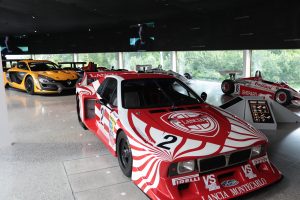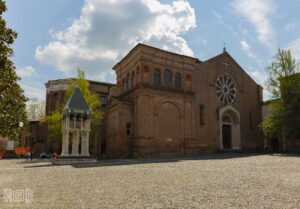The Basilica of Santo Stefano in Bologna is a sacred place that has an intrinsic magic that makes us forget about ourselves. Come with us to discover it!
The Basilica of Santo Stefano is a place full of curiosities, which has assumed various functions during its history. It was a cemetery where Sant’Ambrogio found the remains of the martyrs San Vitale and Sant’Agricola. In Roman times it was a pagan temple dedicated to the goddess Isis, or the Basilica of Santo Stefano was the heart of the religious life of the Longobards for the entire duration of their settlement in Bologna. These are just some anecdotes about the famous Basilica of Santo Stefano, also called by the Bolognese with the name Seven Churches.
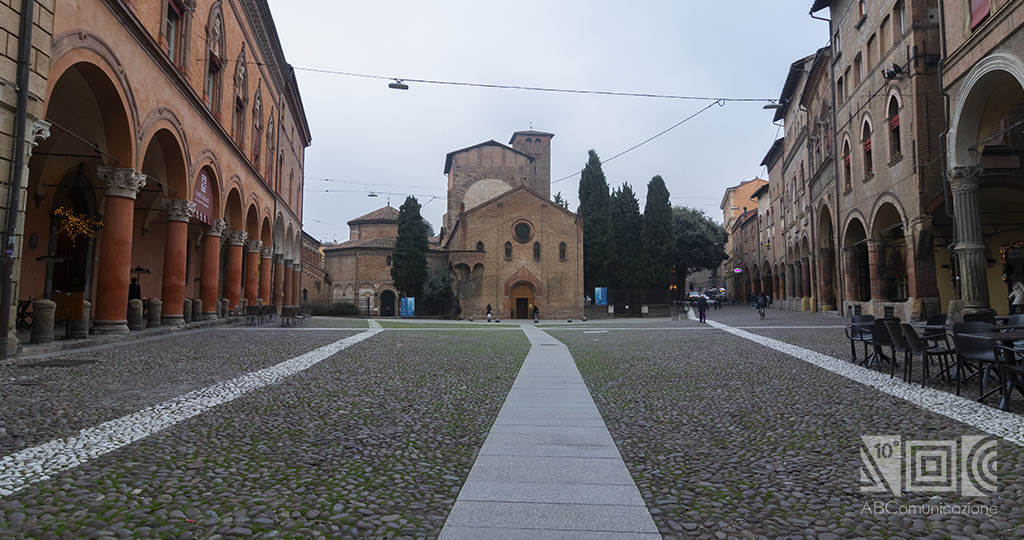
Bologna is woven from sacred and religious places: among these, there is the ancient Jewish ghetto, located in the heart of the city, which is an unmissable and interesting stop to visit.
Where is the Basilica of Santo Stefano?
The Basilica of Santo Stefano is placed at the end of St. Santo Stefano 24 and overlooks the famous square Santo Stefano. It’s a relaxing place and it’s full of spirituality, the surrounding floor it’s made of sampietrini on which tables of numerous rest stops lay.
Sure enough, it’s possible to admire the Basilica of Santo Stefano sipping a coffee or, if you visit it in the evening, it’s an excellent place to take a cocktail with friends.
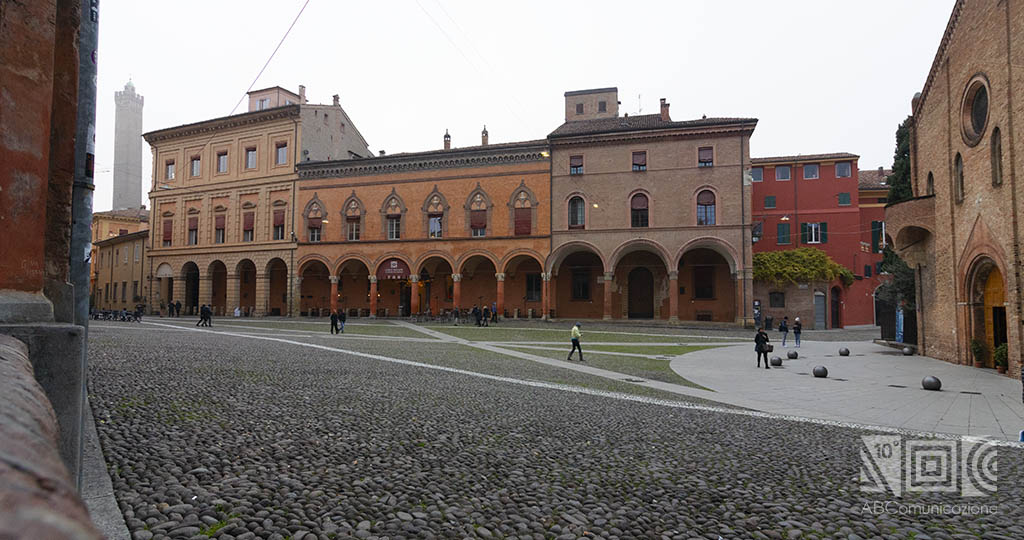
Piazza Santo Stefano is also a meeting point for university students in the city. Did you know that the University of Bologna is the oldest in the western world? The University of Bologna manages and maintains one of the oldest botanical gardens in Europe, discover all the information and visiting times in our article The Botanical Garden of Bologna.
How can I recognise the Basilica of Santo Stefano?
The Basilica of Santo Stefano is particular and recognisable, on his facade we can see three aligned churches. The first from the right is the bigger one and it’s called Church of the Crucified, which was the Longobards’ Cathedral in the past; the second one, the eldest, distinguish from the others for its polygonal shape and it’s called Holy Sepulchre’s Church; at last, on the left we can see the smaller one dedicated to Saint Vitale and Agricola.
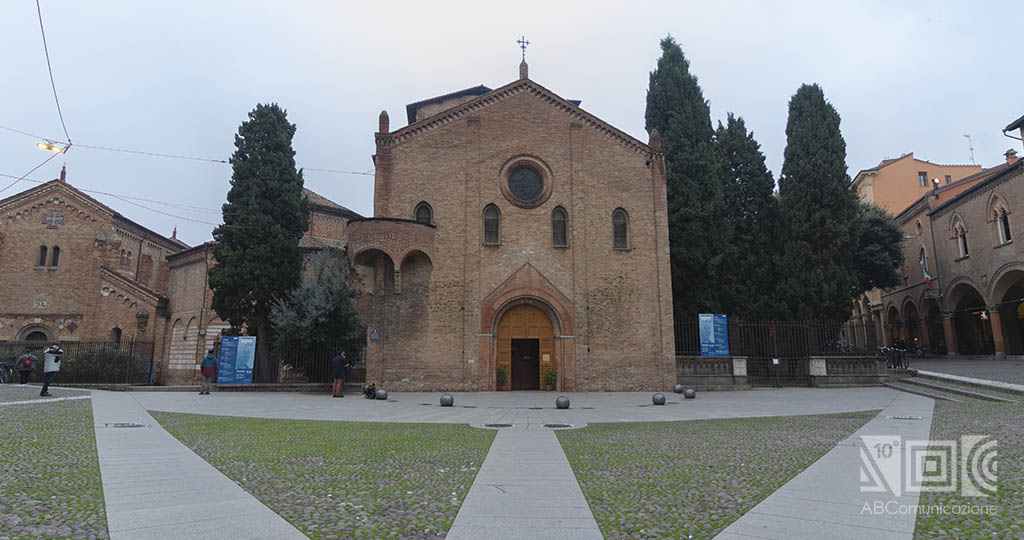
On the main door of Crucified’s Church there’s, on the centre, a white cross with the writing “Sancta Sanctorum” and a hand that symbolised the creative word of God. On the right, at least, a writing which testifies the presence of a temple dedicated to the egyptian divinity Iside.
Why is the Basilica of Santo Stefano called from the bolognese “Seven Churches”?
The Basilica of Santo Stefano is called from the bolognese Seven Churches.
From the origin this place was the union of different buildings of different ages that, builded close among themselves, composed the complex Seven Churches. During its history, the complex was transformed numerous times, due to the invasions of the Hungarian in the X century (900-100 a.d.) and to the numerous restorations that the complex Seven Churches experienced. Sure enough, the complex Seven Churches was subjected to restorations from the X century to the middle of the Twentieth Century and with bitterness of the initial Seven Churches today we have only four of them which overlook on square Santo Stefano that are: Church of the Crucified, Holy Sepulchre’s Church and the Church of the Saints Vitale and Agricola.
Why is the Basilica of Santo Stefano considered the “Holy Jerusalem” of Bologna?
The Basilica of Santo Stefano is compared to the holy city of Jerusalem from the IX century (800 a.d.), thanks to the testimony of the document “Ecclesia Sancti Stephani quae dicitur sancta Jerusalem”.
Whose were the intentions of comparing the Basilica of Santo Stefano to the holy city of Jerusalem? This idea could be only of a big man and who better of the patron of Bologna San Petronio. It was him that during his career like bishop in Bologna decided that the Basilica of Santo Stefano and the complex of Seven Churches had to reproduce the city of Jerusalem. St. Santo Stefano represents the valley of Giosefat, San Giovanni in Monte the mountain of the olive three and St. de Pepoli Ezechia’s river.

The Church of the Crucified
As soon as you enter on the Church of the Crucified, inside the complex of Seven Churches, you can find a representation of the Piety in polychromatic papier-mâché composed of Angelo Pio, above the staircase that brings to the presbytery we can see a beautiful crucifix made by Simone de’ Crocifissi.
From here we can go down to the crypt of the abbot Martino where there are five naves with different columns: the myth says that the second one from the right was brought from Petronio during his pilgrimage to jerusalem and that represents the height of Christ.
At the bottom of the columns there are also the human remains of San vitale and Sant’Agricola, later shifted from the abbot Martino.
Actually there are other relics of the saints but they’re on the cript of the Cathedral of San Pietro. On the sides of the altar there are two frescoes that represents the martyrdom of Vitale and Agricola: the myth says the two men were tortured until the death due to had never repudiate their christian God, in particular Agricola being the master of Vitale and performing a major social position, was crucified.
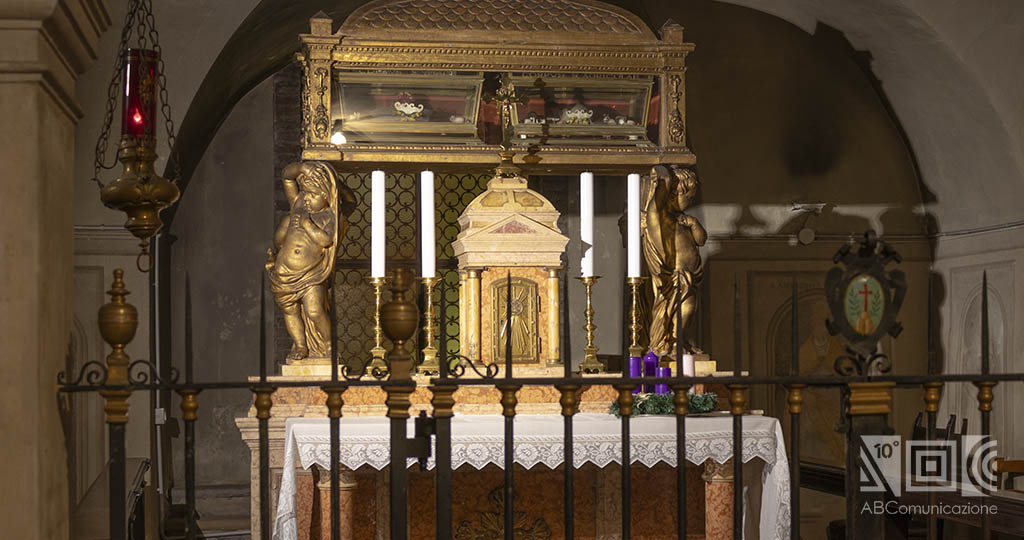
What is inside the church of the Holy Sepulchre?
The church of the Holy Sepulchre, inside the complex of Seven Churches, is builded with an octagonal map and reproduces the “anastasis”, that is the place that contained the sepulchre of God in Jerusalem.
In the centre there’s a representation in 1:2 scale of the Holy Sepulchre of Jerusalem and under it, until two thousand, were conserved the remains of San Petronio, later shifted to the Basilica of San Petronio.
There are also twelve columns that symbolised the twelve apostles and the twelve tribes of Israel; seven of the columns are made of black marble and it’s said that they can belong to the old roman temple dedicated to the egyptian goddess Iside.
There’s also another black column more defiladed from the other that symbolized the flagellation of Christ: the myth says that visiting her guarantees 200 years of indulgences.
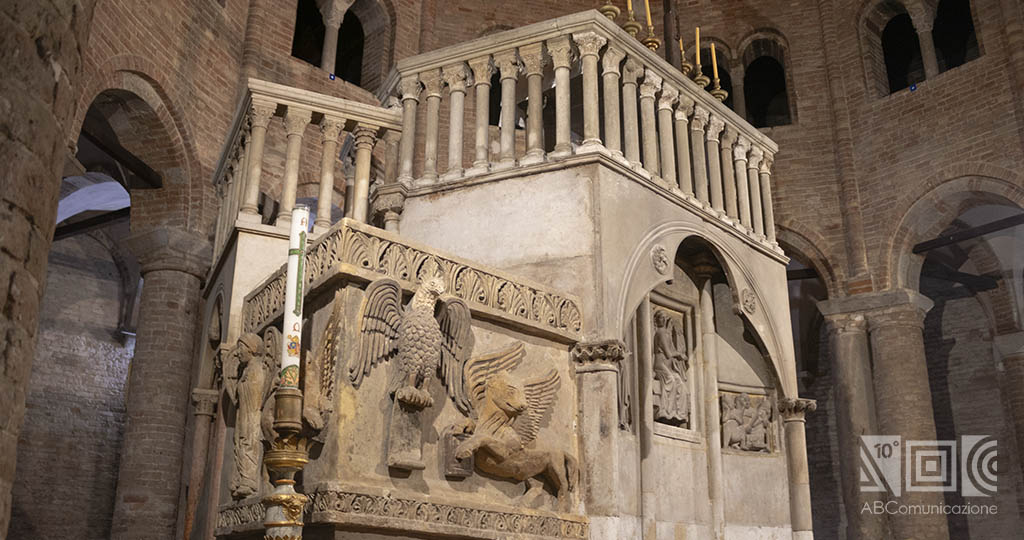
The church of Saints Vitale and Agricola
The church of Saints Vitale and Agricola, inside the complex of Seven Churches, has three old naves, a solid hut roof and numerous mosaics of the Romans. In the two apsis we can find the empty sarcophaguses of Vitale and Agricola in which are represented figures about the christian symbology like: the deer emblem of christianity and the peacock emblem of regeneration. On the right wall we can also find a crucifix, maybe the same where Agricola spent his last moments of life.
Why is the name of the yard of the Basilica of Santo Stefano named “Pilato”
It’s not known why the yard was called “Pilato”, there are two theories: the first says that the yard take the name from the central tank named Catino of Pilato which was used from the Longobards in the past like offertory; the second one says that the yard was named Pilato to remember the “lithostrotos” that is the place where Jesus was sentenced.
The yard of Pilato is delimited from north to south from a roman arcade, where under it, in the center of a window there’s a cock made of stone, from the XIV century (1300 a.d.) called “the cock of San Pietro” to remember the biblical episode towards Jesus. At the sides of the yard, moreover, we can notice different chapels like: Santa Giustina’s Chapel and the Chapel of Giacomo Francia.
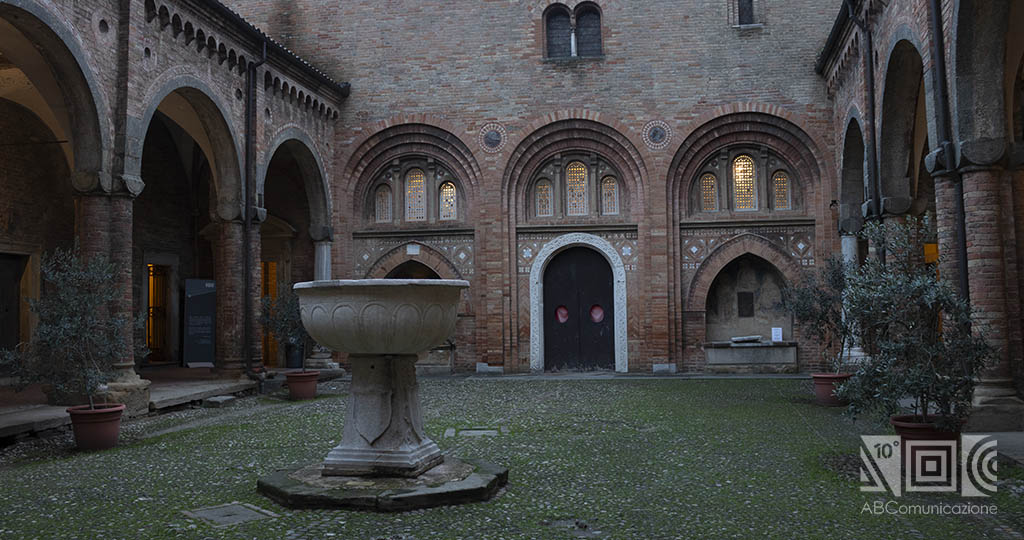
The kindness of the benedictine monks
In addition to the beauty of the complex Seven Churches, a place full of spirituality is waiting for you: the cloister of the benedectine monks. It’s a famous place thanks to its architecture ando for its beauty, sure enough we can find marble columns and romans capitals that represent monstrous figures of animals and humans. Later, from the cloister, we can enter the museum of Santo Stefano, where numerous bolognese works of three hundred are exhibited. The particularity of this place is that the benedectine monks are wishful to help the others, offer various products of the monastery to the tourists and these products are: chocolates, honey and a very good homemade liqueur!
When can I visit the Basilica of Santo Stefano?
Every day from 9 a.m. to 7 p.m. (during the liturgical activities, tourists’ visits might be subjected to variations).
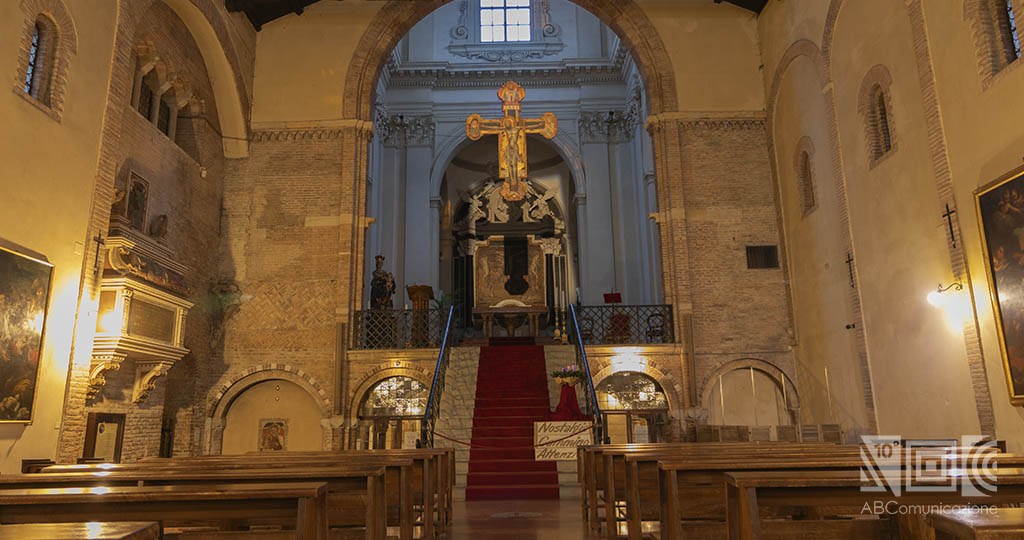
How much does it cost to visit the Basilica of Santo Stefano?
You can enter by voluntary contributions.
If you are curious about the history and legends of the Two Towers, run to read The two towers of Bologna: the symbol of the city! If you want to deepen the history of the Basilica of Our Lady of San Luca, with its arcades, which have become part of the UNESCO heritage, do not miss this article!
Did you know that Bologna besides having Piazza Sette Chiese is famous throughout Italy for its Seven Secrets? Discover in our article the curiosities that concern it.
Bibliografia.
- Bianchini M., 101 cose da fare a Bologna almeno una volta nella vita, Roma, Newton Compton Editori, 2009.
- Borghi B., La Basilica di Santo Stefano Bologna. Un viaggio verso la terra santa, Bologna, Minerva edizioni, 2011.
- Costa T., Poli M., Conoscere Bologna, Bologna, Editore Costa, 2004.
- Touring Club Italiano, Bologna per scoprire e ricordare.



